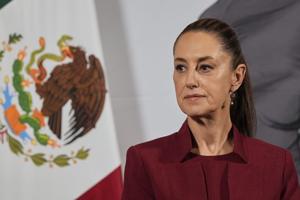New Delhi: The Supreme Court has said that with a schism exploited by colonial powers in dividing the two languages on religious lines, Hindi is now understood to be the language of Hindus and Urdu of Muslims—“a pitiable digression from reality; from unity in diversity; and the concept of universal brotherhood.”“Our misconceptions, perhaps even our prejudices against a language have to be courageously and truthfully tested against the reality, which is this great diversity of our nation: Our strength can never be our weakness. Let us make friends with Urdu and every language,” a bench of Justices Sudhanshu Dhulia and K Vinod Chandran said.
The court dismissed a plea filed by Varshatai against the use of Urdu on the signboard of the Municipal Council in Akola district, Maharashtra..Supreme Court to hear multiple pleas against Waqf Amendment Act on April 16.

The petitioner contended that a new legislation—namely, the Maharashtra Local Authorities (Official Languages) Act, 2022—had been enacted, under which the use of Urdu language on the signboard of the Municipal Council is not permitted.“The High Court to our mind rightly concluded that the 2022 Act, on which the appellant placed significant reliance, does not prohibit the use of an additional language, which is Urdu in the present case, on the signboard of the Municipal Council building,” the bench said.The court said there is no prohibition on using any other language, especially one included in the Eighth Schedule of the Constitution.
“Even the enactment recognises that language essentially is a tool of communication; which, according to us, cannot be condemned, when this language is being used by a community or group. We have to emphasise that Marathi and Urdu occupy the same position under Schedule VIII of the Constitution of India,” the bench said.The bench noted that a fellow citizen had taken great pains to bring the matter twice before the High Court and twice again before the Supreme Court.
“What the appellant thinks may also be the thinking of many of our fellow citizens. These need to be addressed,” the bench said.The court emphasised that language is not religion.
Language does not even represent religion. Language belongs to a community, to a region, to people—and not to a religion.“Language is culture.
Language is the yardstick to measure the civilisational march of a community and its people. So is the case of Urdu, which is the finest specimen of Ganga-Jamuni tahzeeb, or the Hindustani tahzeeb, which is the composite cultural ethos of the plains of northern and central India. But before language became a tool for learning, its earliest and primary purpose will always remain communication,” the bench said.
The bench observed, “We must respect and rejoice in our diversity, including our many languages. India has more than a hundred major languages. Then there are other languages known as dialects or ‘Mother Tongues’ which also run into hundreds.
According to the 2001 Census, India had a total of 122 major languages including the 22 scheduled languages, and a total of 234 mother tongues. Urdu was the sixth most spoken scheduled language of India.”The court pointed out that the Constitution mentions 22 Indian languages in its Eighth Schedule, which includes both Marathi and Urdu.
Significantly, English is not included in the Eighth Schedule as it is not an Indian language..Allahabad HC rape case remarks: Why make such observations? SC asks.
The court stated that prejudice against Urdu stems from the misconception that it is alien to India.“This opinion, we are afraid, is incorrect as Urdu, like Marathi and Hindi, is an Indo-Aryan language. It is a language which was born in this land.
Urdu developed and flourished in India due to the need for people belonging to different cultural milieus who wanted to exchange ideas and communicate amongst themselves. Over the centuries, it attained ever greater refinement and became the language of choice for many acclaimed poets,” the bench said.The court also asked why Hindustani was not recognised as an official language of the Union.
It said the main reason was the partition of the nation in 1947 and the adoption of Urdu by Pakistan as its national language, making Hindustani the ultimate victim.“Even today, the language used by the common people of the country is replete with words of the Urdu language, even if one is not aware of it. It would not be incorrect to say that one cannot have a day-to-day conversation in Hindi without using words of Urdu or words derived from Urdu.
The word ‘Hindi’ itself comes from the Persian word ‘Hindavi’! This exchange of vocabulary flows both ways because Urdu also has many words borrowed from other Indian languages, including Sanskrit,” it said.The bench pointed out that Urdu words have a strong presence in court parlance, both in criminal and civil law. From adalat to halafnama to peshi, the influence of Urdu is clear in the language of Indian courts.
Even though the official language of the Supreme Court and High Courts is English (as per Article 348 of the Constitution), many Urdu words continue to be used, such as vakalatnama and dasti.Viewed from another perspective, Urdu has been adopted by many states and Union Territories in India as a second official language, in accordance with Article 345 of the Constitution. These states include Andhra Pradesh, Bihar, Jharkhand, Telangana, Uttar Pradesh, and West Bengal, while the Union Territories include Delhi and Jammu and Kashmir.
The court also noted that from a constitutional perspective, the use of language for official purposes is not governed by a rigid formula. For example, Article 120 of the Constitution prescribes Hindi or English as the official language of Parliament, but the proviso allows a member to express themselves in their mother tongue if they do not know Hindi or English. The same principle applies to State legislatures under Article 210.
“It may also be of same interest to know that when we criticise Urdu, we are in a way also criticising Hindi, as according to linguists and literary scholars, Urdu and Hindi are not two languages, but it is one language. True, Urdu is mainly written in Nastaliq and Hindi in Devanagari; but then scripts do not make a language. What makes languages distinct is their syntax, their grammar and their phonology.
Urdu and Hindi have broad similarities in all these counts,” the bench said.If there are dissimilarities, they also exist between Hindi and high Hindi, just as they do between Urdu and high Urdu. But close similarities exist between Hindi and Urdu in their day-to-day spoken forms, the bench noted.
Although the case did not warrant an elaborate discussion on the rise and fall of Urdu, the bench observed that the fusion of Hindi and Urdu was hindered by puritanical views on both sides, leading to Hindi becoming more Sanskritised and Urdu more Persianised.Coming to the present case, the bench said that a Municipal Council exists to provide services to the local community and meet their day-to-day needs..
Congress cites Tulsi Gabbard to question EVM reliability; urges SC to take note. “If people or a group of people, residing within the area covered by the Municipal Council are familiar with Urdu, then there should not be any objection if Urdu is used in addition to the official language i.e.
Marathi, at least on the signboard of the Municipal Council. Language is a medium for exchange of ideas that brings people holding diverse views and beliefs closer and it should not become a cause of their division,” the bench said.The display of an additional language cannot, by itself, be said to be in violation of the provisions of the 2022 Act.
The High Court had considered the relevant provisions of law while arriving at its findings, the court said.“We completely agree with the reasoning given by the High Court that there is no prohibition on the use of Urdu under the 2022 Act or in any provision of law. The entire case of the appellant to our mind is based on a misconception of law.
We see no reason therefore to interfere in the present case. These appeals are liable to be dismissed, and are hereby dismissed,” the bench said.Petitioner Varshatai, a former member of the Municipal Council, had contended that the work of the Municipal Council could only be conducted in Marathi, and that the use of Urdu in any manner was impermissible—even if it was just a writing on the signboard of the Municipal Council.
.












